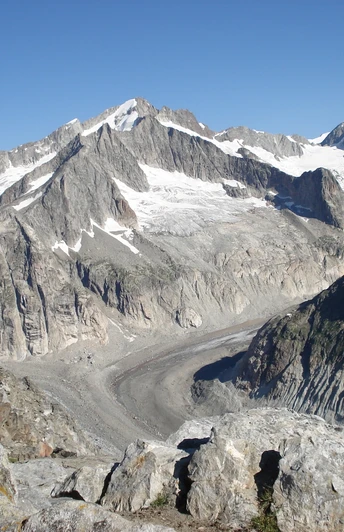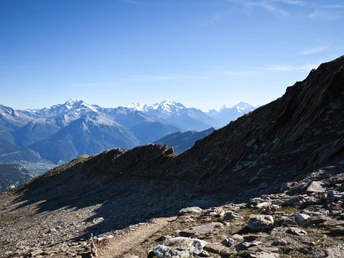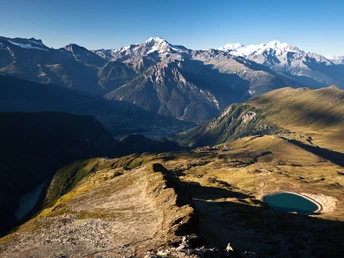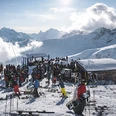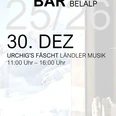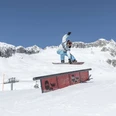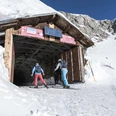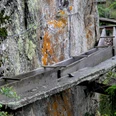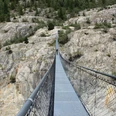- Photos & Map
How would you like to arrive?
- Description
- Good to know
- Nearby
- 1:30 h
- 1.52 km
- 340 m
- 2,677 m
- 3,018 m
- 341 m
- Start: Hohbiel, Belalp
- Destination: Hohbiel, Belalp
The hike initially leads to Bruchegg, from where you take the chairlift up to Hohbiel. Now it takes about one and a half hours over alpine meadows to the ridge and up to the Sparrhorn. The ascent does not present major difficulties and is suitable for sure-footed children.
From the summit of Sparrhorn at 3021 m above sea level, a panoramic view opens: the peaks of the Fusshörner are within reach, lower down the Oberaletsch Glacier can be seen, and in the distance, among others, the four-thousanders Matterhorn, Weisshorn, Dom, and Monte Rosa are visible.
Good to know
Pavements
Best to visit
Directions
Hohbiel - Sparrhorn - Hohbiel
Tour information
Barrier-Free
Cultural Interesting
Summit
Equipment
Sturdy footwear, weather-appropriate clothing, sun and rain protection, as well as a sufficient supply of food and drinks are recommended in case there are no inns or shops available or open. Although the path is very well marked throughout, you should always carry a suitable hiking map for safety reasons. Bring poles or other aids.
Directions & Parking facilities
Arrival by car
From Western Switzerland: A9 Lausanne - Vevey, or Northwestern Switzerland: A12 Bern - Vevey: A9 - Sierre: Main road Sierre - Brig
From Northwestern Switzerland: A6 Bern - Thun - Spiez: Main road Spiez - Kandersteg (car shuttle Lötschberg tunnel) - Goppenstein - Gampel - Brig
From Eastern and Central Switzerland: Andermatt - Realp (year-round car shuttle Furka; in summer via Furka pass) - Oberwald - Brig
From Ticino (in summer): Airolo - Nufenen pass - Ulrichen – Brig
Or via Centovalli – Domodossola – Simplon pass – Brig
From Italy (Aosta, Mt. Blanc Tunnel): Aosta - Grand Saint Bernard tunnel (in summer via the pass) - Martigny: Highway A9 - Sierre: Main road Sierre – Brig
Or via Domodossola – Simplon pass – Brig
Blatten bei Naters
From Brig you reach Blatten bei Naters via Naters, then continue by cable car to the car-free Belalp.
Paid parking is available at Chienzlichrommu and in the parking garage in Blatten bei Naters.
More information can be found at:
Blatten bei Naters is accessible by public transport from Brig or Naters.
You can reach Belalp from Blatten by cable car.
Timetable at: www.belalp.ch
Literature
Author´s Tip / Recommendation of the author
- Enjoy the beautiful view from the Sparrhorn
- Sign the summit register
Safety guidelines
Despite the "unmistakable" marking of hiking trails, we recommend always carrying a corresponding hiking map for safety reasons, so that in the case of a thunderstorm or emergency you can quickly find a safe area.
Particularly in autumn, pay attention to fallen leaves on the ground that can hide unevenness, roots, stones, or holes in the path. After storms, trees may still fall or branches drop. With adverse weather conditions, near-natural paths may become muddy and slippery. You should expect such path impairments when hiking.
Not all rocks or drops are secured with ropes or railings. Sure-footedness is sometimes required. If you认为 certain sections are not passable for you, you should avoid them.
Map
Nearby
